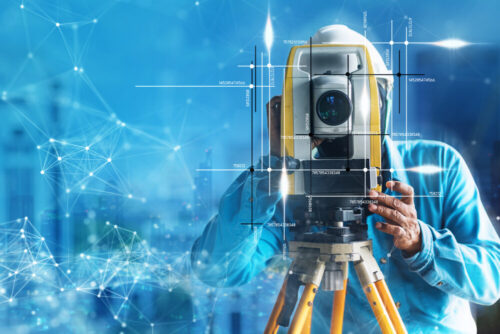BENEFITS OF USING MODERN TECHNOLOGY IN LAND SURVEYING
Land surveying is an essential activity that involves the precise measurement and mapping of land boundaries, topography, and other important features. Traditionally, surveyors used simple tools such as theodolites, tapes, and plumb bobs to collect measurements. However, modern technology has revolutionized the field of land surveying, providing more accurate and efficient methods for data collection and analysis. In this article, we’ll explore the benefits of using modern technology in land surveying.
Increased accuracy
One of the most significant benefits of using modern technology in land surveying is the increased accuracy of measurements. With the use of satellite positioning systems such as GPS and GLONASS, surveyors can collect highly accurate data on the location and elevation of points on the earth’s surface. This level of accuracy is crucial in determining property boundaries, designing infrastructure, and identifying potential hazards.
Improved efficiency
Another benefit of modern technology in land surveying is improved efficiency. With the use of electronic surveying equipment such as robotic total stations and 3D laser scanners, surveyors can collect data much faster than traditional methods. This means that projects can be completed more quickly, reducing costs and improving productivity.
Enhanced safety
Land surveying can be a hazardous activity, particularly in remote or difficult-to-access areas. However, modern technology has made surveying safer by eliminating the need for surveyors to climb steep slopes or wade through rivers. Remote-controlled equipment such as drones and unmanned aerial vehicles (UAVs) can be used to collect data in hazardous locations, reducing the risk of injury to surveyors.
Increased data quality
Modern technology also enables surveyors to collect more comprehensive and detailed data than was previously possible. For example, 3D laser scanners can capture millions of data points to create highly detailed and accurate digital models of the land surface. This data can be used to create detailed maps and models, improving the accuracy of engineering designs and reducing the risk of errors.
Improved communication
Finally, modern technology has improved communication between surveyors and other professionals involved in land development projects. Digital data can be easily shared between team members, allowing for real-time collaboration and reducing the risk of errors or miscommunication.
Faster Surveying
In the past, land surveying was a time-consuming process that required a lot of manual work. However, with modern technology, surveyors can now complete their work much faster. For instance, GPS technology enables surveyors to quickly and easily locate survey points, while laser scanning devices can capture large amounts of data in a short time. As a result, land surveying projects can be completed more quickly, allowing construction and development projects to move forward more efficiently.
In conclusion, modern technology has brought significant benefits to the field of land surveying. From increased accuracy and efficiency to improved safety and data quality, these benefits have made land surveying faster, safer, and more reliable than ever before. As technology continues to evolve, we can expect even more advanced and innovative solutions to emerge in the field of land surveying, providing new opportunities for professionals in this critical industry.


